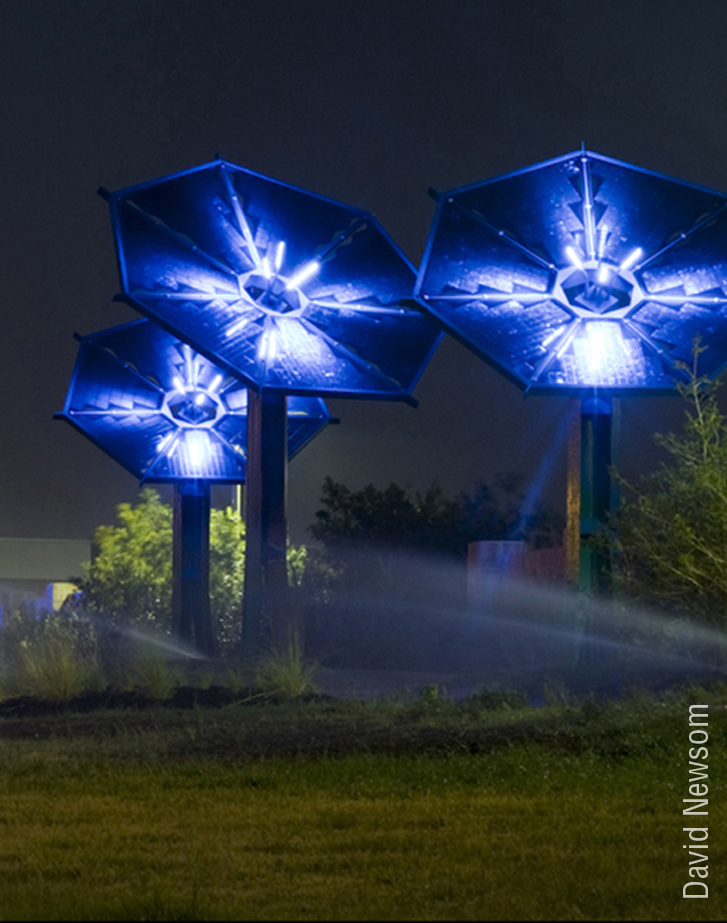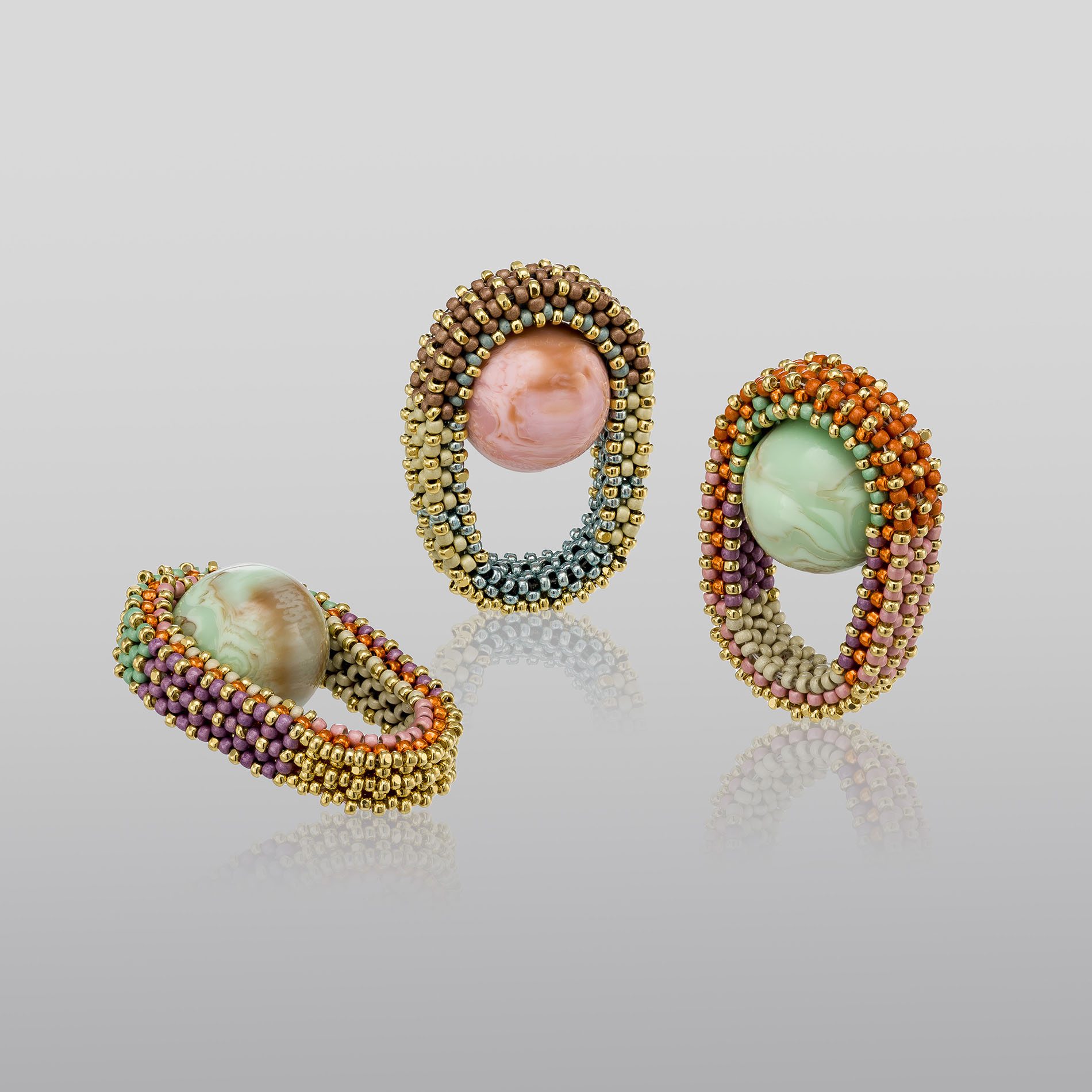How we react to climate change – whether we regard it as an existential or merely peripheral issue – depends to a great extent on how we see deteriorating ecosystems as affecting us. Amy Hoagland’s art raises that very question: how deeply are we connected with, and embedded in, nature?
Crossing disciplinary boundaries, Amy merges glassmaking, metalwork, and paper-making craft with 3D scanning to create large spatial installations challenging the perception that humans stand apart from and outside of nature.
Her thought-provoking artwork is earning national recognition: she is the recipient of the new Windgate Fellowship for Emerging Craft Artists Advancing Sustainability. Three recent works illustrate the breadth – and depth – of her craft.
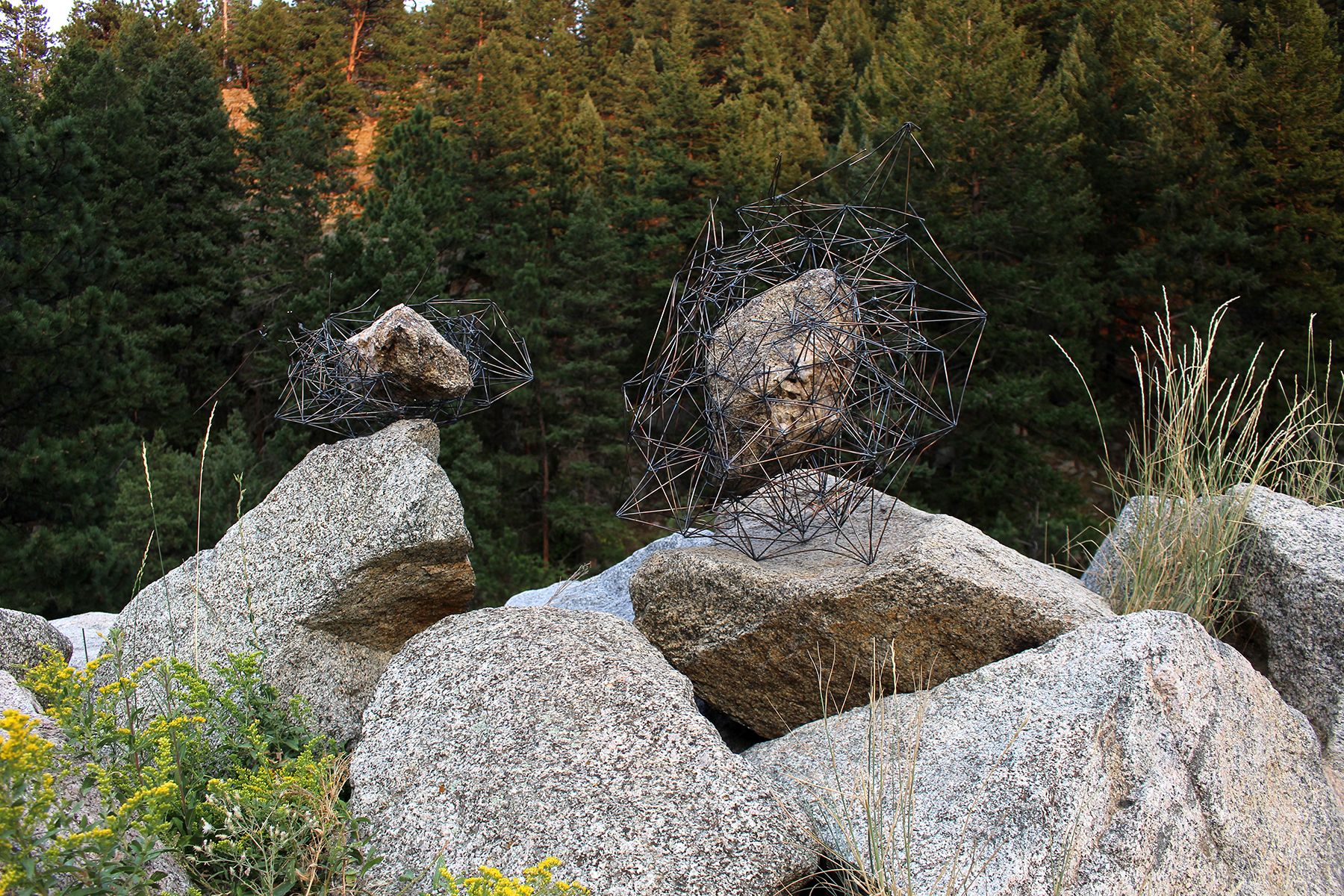
Amy Hoagland, How Do They Belong. Copper coated welding rods, rocks from Boulder Canyon. ©Amy Hoagland 2020. Courtesy of the artist.
To create How Do They Belong, Amy borrowed rocks from Boulder Canyon, encapsulated them in locally sourced copper coated steel welding rods, photographed her sculpture in the canyon, and then removed the rocks from the casing, returning them to the local site from which they came. Her craft reminds us that a seemingly non-natural human activity – welding – is linked to, and embedded in, nature because copper and steel are mined from sedimentary and volcanic rock.
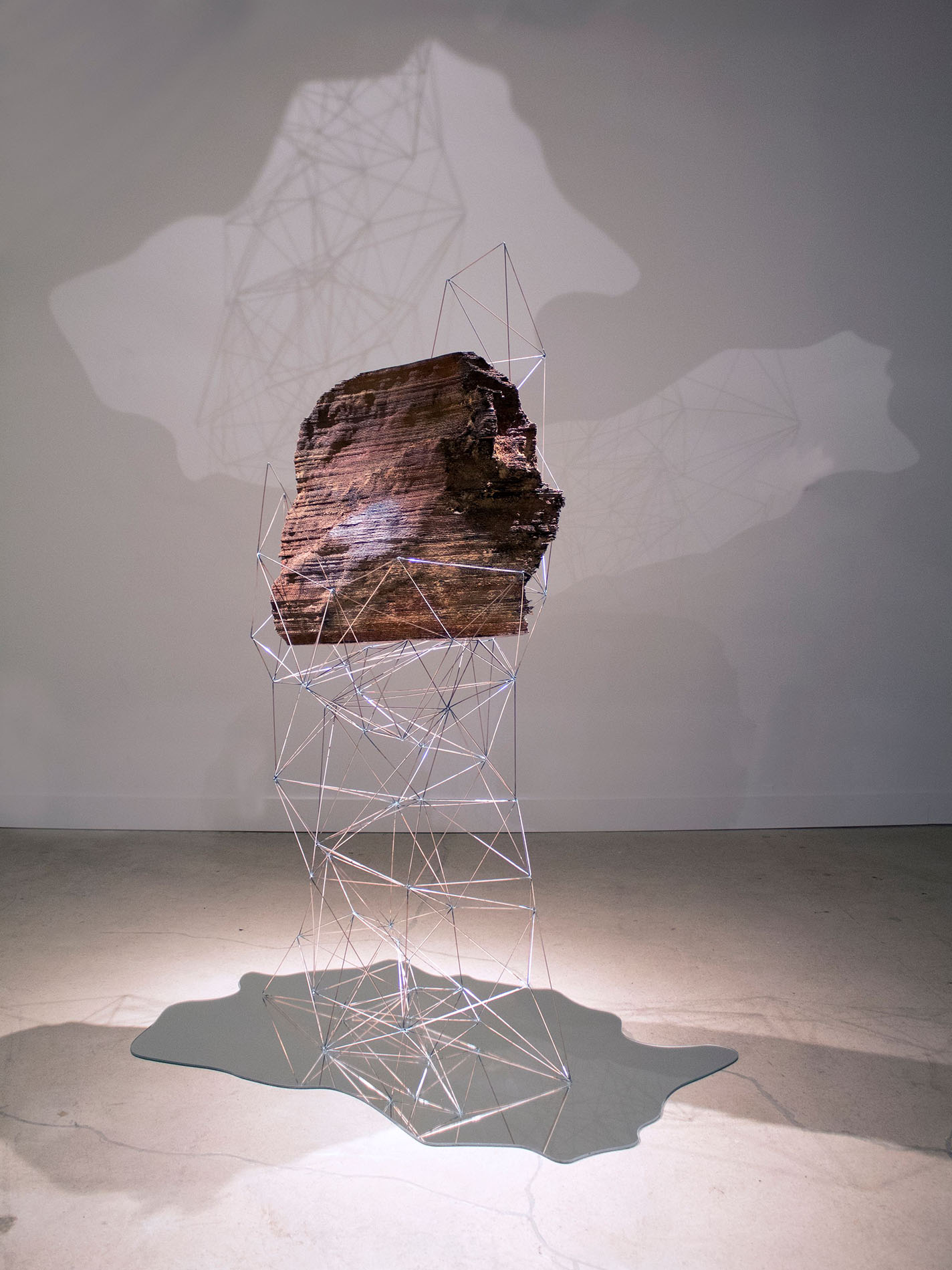
Amy Hoagland, Synthetic Erosion. Cardboard, copper coated welding rod, mirror. ©Amy Hoagland 2021. Courtesy of the artist.
Synthetic Erosion began with a 3D scan of a rock from a local canyon. Amy recreated the rock with synthetics: cardboard recycled from a local furniture company, a used mirror, and locally sourced copper-coated welding rod. At first glance, one might not associate these synthetics with nature, though all had their origin in nature: cardboard from trees, copper from mined rock, and glass from natural, abundant raw materials such as sand, soda ash and limestone. The sculpture’s apt title invites reflection: as natural materials erode over time, so has human comprehension of our dependence on nature.
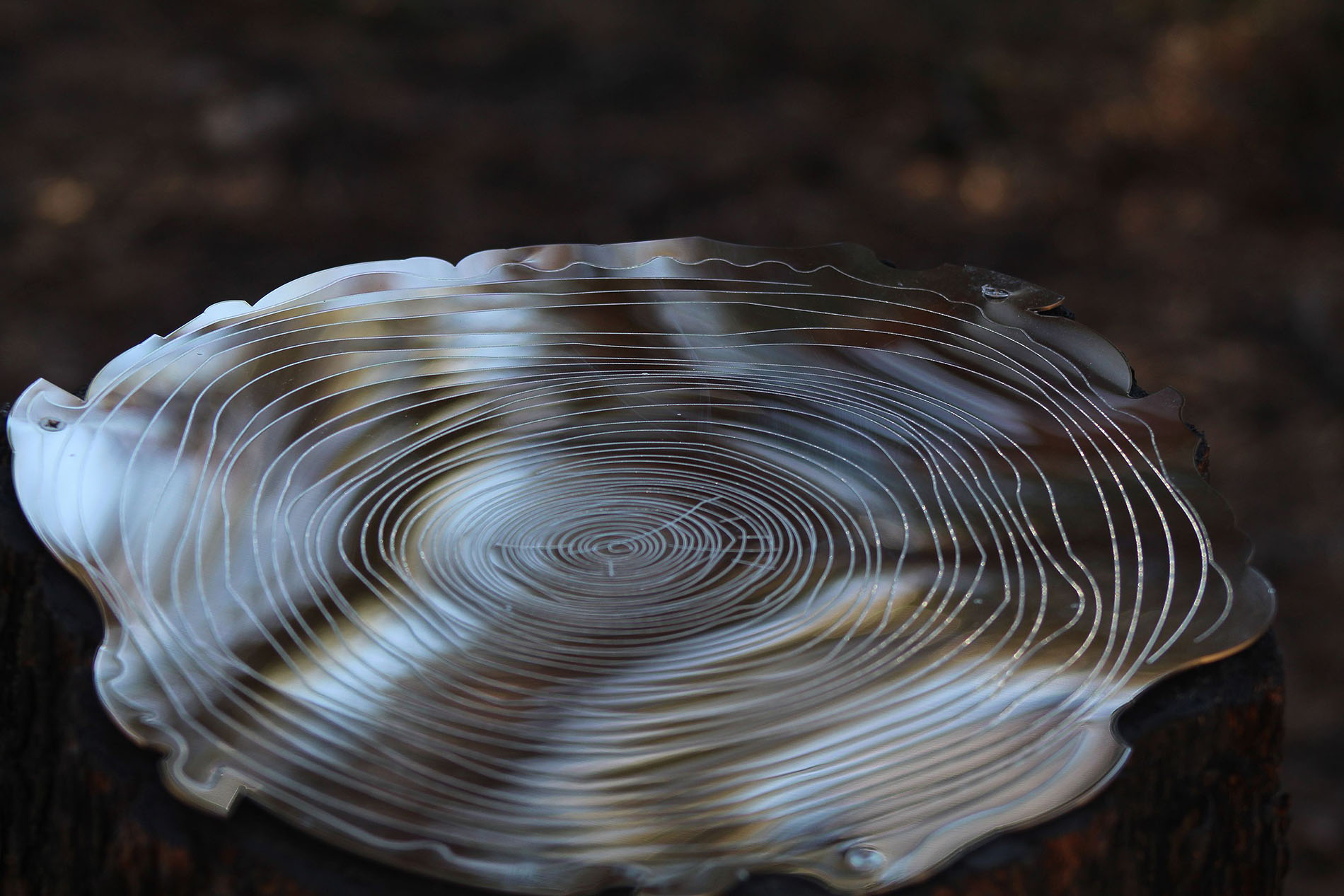
Amy Hoagland, Reflections on the Future. Etched stainless steel. ©Amy Hoagland 2021. Courtesy of the artist.
Amy’s work also explores our human capacity to absorb and learn from environmental loss. Reflections on the Future is her memorial to the 2020 “Cal-Wood fire.” Fueled by dry conditions and strong winds, a fire of unknown origin raced through Boulder County, Colorado at a rate of a thousand acres per hour. By the time the Cal-Wood and another nearby fire had been extinguished, the fires had consumed over 10,500 acres, precipitated 4,925 evacuation orders, and cost $6.6 million to contain.
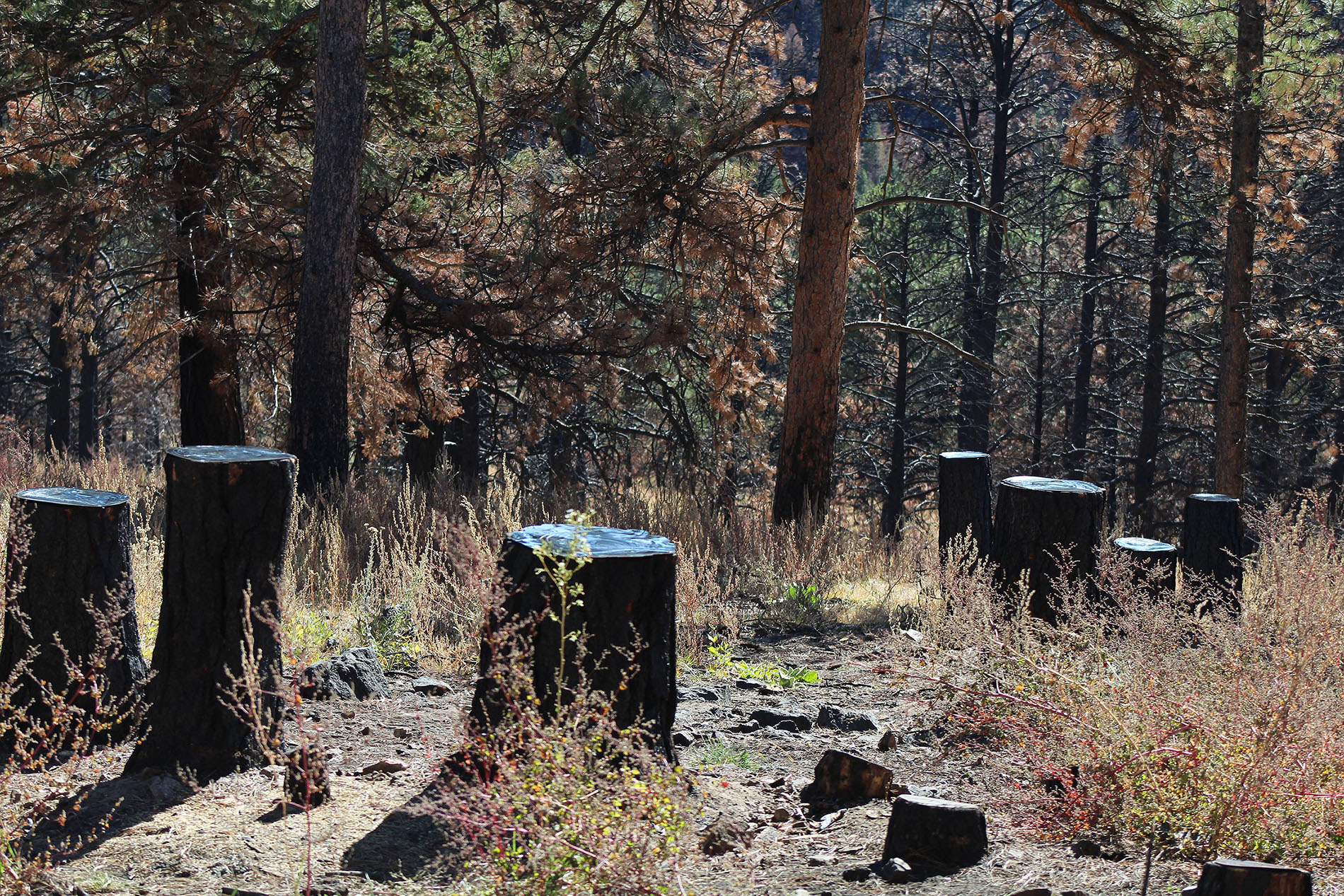
Amy Hoagland, Reflections on the Future. Etched stainless steel. ©Amy Hoagland 2021. Courtesy of the artist.
In the fire’s aftermath, Amy saw a potential community-wide learning experience. Collaborating with Cal-wood Education Center and CU Science Discovery, she led a participatory art workshop in which local students traced tree rings from burned out stumps onto plexiglass. Amy then etched the tracings onto stainless steel plates. A collection of the steel plates atop salvaged stumps now forms a gathering space for community and environmental educational events.
By creating art that spurs deeper reflection – and far-reaching conversation – on our human connection to nature, Amy aims to evoke greater empathy with our planet’s ecological challenges. She seems well on her way to achieving that goal.

